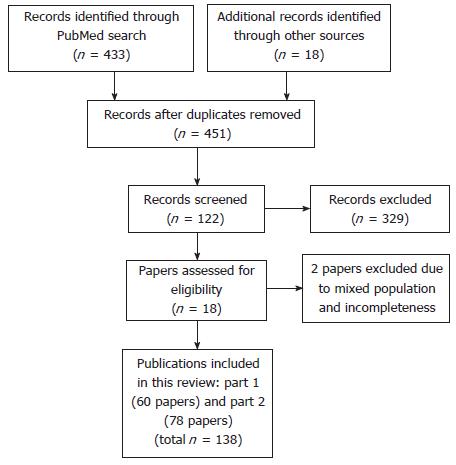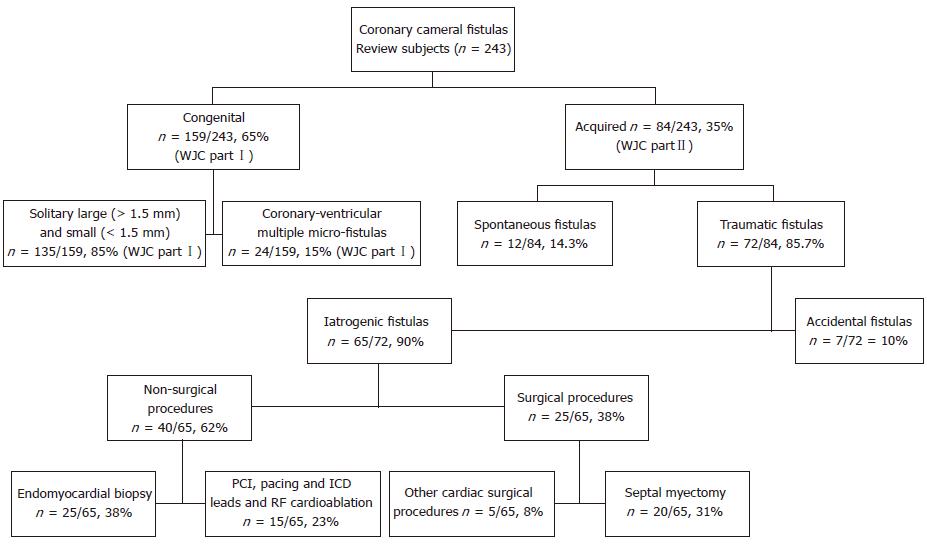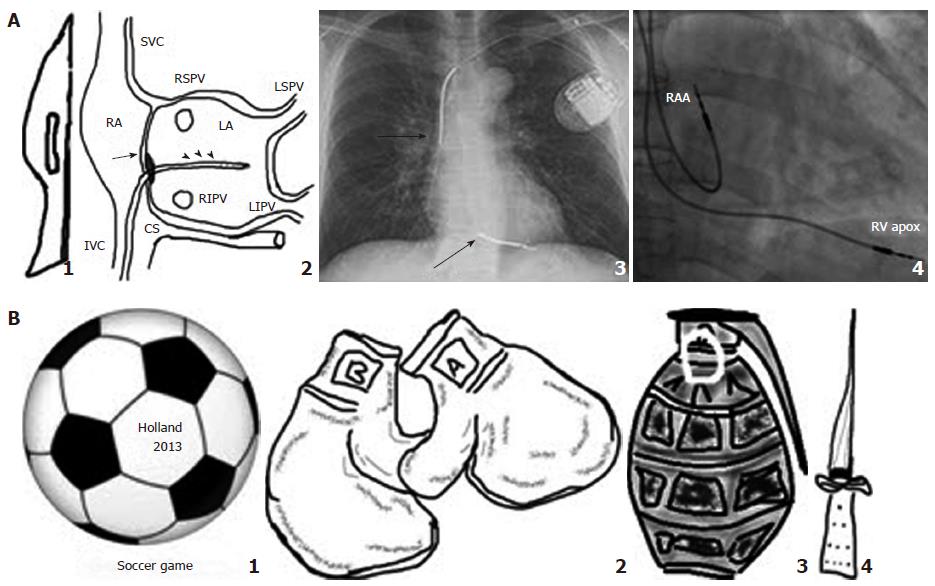Copyright
©2013 Baishideng Publishing Group Co.
World J Cardiol. Dec 26, 2013; 5(12): 484-494
Published online Dec 26, 2013. doi: 10.4330/wjc.v5.i12.484
Published online Dec 26, 2013. doi: 10.4330/wjc.v5.i12.484
Figure 1 Flow diagram of literature search of coronary cameral fistulas in adult population.
Figure 2 Schematic representation of review subjects with congenital and acquired coronary-cameral fistulas.
ICD: Implantable cardioverter-defibrillator; PCI: Percutaneous coronary intervention; RF: Radiofrequency.
Figure 3 Schematic examples of some of the conditions, procedures and attributes involved in the development of (A) acquired traumatic iatrogenic and (B) acquired traumatic accidental coronary-cameral fistulas.
A: 1: Surgical scalpel; 2: Radiofrequency cardio-ablation (arrow heads), and transseptal puncture (arrow); 3: ICD lead (arrows); and 4: Pacing leads; B: 1 Soccer game; 2 Boxing; 3: Shrapnel; and 4: Knife. CS: Coronary sinus; ICD: Internal cardioverter defibrillator; IVC: Inferior vena cava; LA: Left atrium; LIPV: Left inferior pulmonary vein; LSPV: Left superior pulmonary vein; RA: Right atrium; RAA: Right atrial appendage; RIPV: Right inferior pulmonary vein; RSPV: Right superior pulmonary vein; RV: Right ventricular; SVC: Superior vena cava.
- Citation: Said SA, Schiphorst RH, Derksen R, Wagenaar LJ. Coronary-cameral fistulas in adults: Acquired types (second of two parts). World J Cardiol 2013; 5(12): 484-494
- URL: https://www.wjgnet.com/1949-8462/full/v5/i12/484.htm
- DOI: https://dx.doi.org/10.4330/wjc.v5.i12.484











